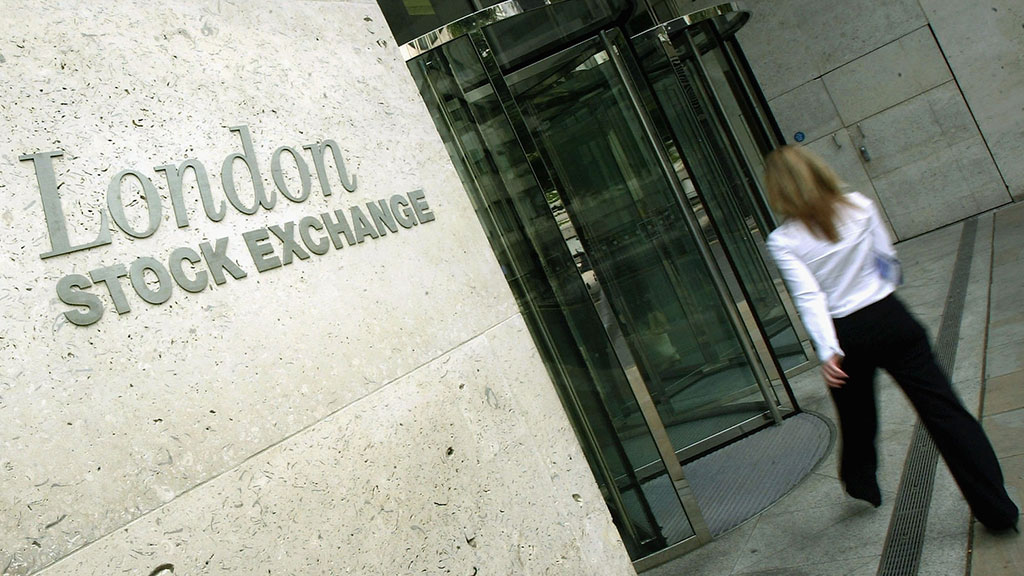Why investment trusts are the best vehicle for your money
Max King explains the advantages of investment trusts – sometimes called closed-ended funds – over their open-ended counterparts (or Oeics).

In the days before the internet and wall-to-wall regulation, investing in unit trusts was much easier than in investment trusts. Unit trusts were marketed directly to the public through newspapers, billboards and mailshots which contained the essential details about the manager, the investment focus and past performance, together with a rousing message of optimism.
The shares of investment trusts, on the other hand, which are traded on the stockmarket, could only be bought through stockbrokers, to whom few non-golfers had access. Share prices were listed in microscopic typeface in newspapers, but information on trusts, other than coverage in the financial press, required a bothersome process of contacting the managers by telephone or letter,
How investment trusts started to regain their popularity
As a result of this relative inaccessibility, the share price of the average investment trust fell to a large discount to its net asset value (in other words, the share price of the trust fell below the value per share of the underlying portfolio owned by the trust – more on that below). They mostly came to be owned by bargain-hunting professional investors, rather than the private investors they were designed for.
MoneyWeek
Subscribe to MoneyWeek today and get your first six magazine issues absolutely FREE

Sign up to Money Morning
Don't miss the latest investment and personal finances news, market analysis, plus money-saving tips with our free twice-daily newsletter
Don't miss the latest investment and personal finances news, market analysis, plus money-saving tips with our free twice-daily newsletter
Share buybacks were then illegal; directors were not independent of the manager; and poor investment performance met little response. Many trusts were wound up, while new launches were few. Trusts seemed to be in irreversible decline.
Slowly but surely, the remaining trusts started to take action. Savings schemes were introduced and, from 1986, tax-efficient personal equity plans (PEPs) so that investors no longer needed a stockbroker.
Marketing was improved, directors became more independent of the manager and a change in the law permitted buybacks of shares, providing a useful boost to performance if bought at a large discount.
The internet, meanwhile, has made access to information far easier. Share prices, performance and news can be accessed via the stock exchange or numerous other websites. Online dealing services have made it cheap and easy to buy and sell individual shares. Year by year, private investor ownership has increased and discounts shrunk.
Meanwhile, unit trusts, now called “Oeics” (open-ended investment companies) have become less accessible. Direct investment is discouraged. Investors are usually expected to deal through fee-charging independent financial advisors (IFAs) who cover a broad range of financial services but often know little about investment.
Those investors who choose to brave the fund manager’s website to learn about the fund or check its price, are confronted by a bewildering range of share classes, a focus on marketing rather than information, and fund literature that falls well short of what a typical trust provides.
The investment trust advantage
Given that the total market value of investment trusts is a fraction of that of Oeics, it will surprise many to be told that all comparative surveys show that trusts consistently outperform Oeics, even when a trust and an Oeic with the same investment remit are managed side by side by the same manager. This advantage is greatest in illiquid asset classes (those which can be hard to buy and sell or to value reliably) such as smaller companies, property, private equity and infrastructure projects.
The main reason for this is that investment trusts have fixed pools of capital, subject to occasional equity issuance or buybacks, whereas the size of Oeics fluctuates with investment demand. It is much easier to manage a fixed pool of capital than a permanently changing one.
Here’s why: inevitably, buyers of Oeics flood in when the fund has done well and markets are high, requiring the manager to buy expensively. They then rush for the exit after a period of poor performance, requiring the manager to sell at low prices. As a result, Oeic managers are much more exposed to shifts in market sentiment than trust managers.
Enhancing this effect is the ability of trusts to increase returns by borrowing to invest if the investment opportunities are attractive (known as “gearing up”), or to hold cash if they are not. Oeics cannot borrow and have less latitude to hold cash. (Although bear in mind that gearing cuts both ways – if mis-timed, it can exacerbate losses rather than bolster returns).
Independent non-executive directors impose an additional cost on trusts, but it’s one that is well worth paying. These directors regularly review performance, question the manager’s decisions, control costs and protect the investors. When performance has been poor, they can require the management company to change the nominated manager, move the trust to a new management company or wind-up the trust entirely, often under pressure from investors.
Oeics are controlled by their management company and any changes to arrangements are entirely their decision. When performance is good, their managers, motivated by their own profitability, find it easy to assume that limitless growth in the size of a fund will not affect performance. Directors of trusts can protect their shareholders from the dilution of performance that comes from reckless expansion.
Finally, shareholders in trusts have the right to attend and vote at annual general meetings (AGMs). The chief reason for turning up is to hear a presentation by the fund manager, ask questions of the manager and directors and form a first-hand view of them. Presentations by Oeic managers are restricted to invited professional investors.
Perhaps the only potential negative for trusts is that as noted earlier, their share prices, driven by investor demand and supply, diverge from underlying asset value. This results in the shares trading at a premium or discount to net asset value (NAV), while Oeics are always traded at asset value.
Buying an out-of-favour trust at a substantial discount will provide an additional return if the discount narrows, but drag on performance if it widens. However, for long-term investors, this boost to or drag on performance should pale into insignificance compared to the investment return of the trust.
In recent years, discounts have trended steadily downwards, enhancing returns, enabling increased share issuance, and reducing buybacks. But this trend cannot continue. It may reverse for individual trusts or sectors if performance disappoints – but the intrinsic advantages of investment trusts surely mean that the days of universally-wide discounts are over.
Get the latest financial news, insights and expert analysis from our award-winning MoneyWeek team, to help you understand what really matters when it comes to your finances.

Max has an Economics degree from the University of Cambridge and is a chartered accountant. He worked at Investec Asset Management for 12 years, managing multi-asset funds investing in internally and externally managed funds, including investment trusts. This included a fund of investment trusts which grew to £120m+. Max has managed ten investment trusts (winning many awards) and sat on the boards of three trusts – two directorships are still active.
After 39 years in financial services, including 30 as a professional fund manager, Max took semi-retirement in 2017. Max has been a MoneyWeek columnist since 2016 writing about investment funds and more generally on markets online, plus occasional opinion pieces. He also writes for the Investment Trust Handbook each year and has contributed to The Daily Telegraph and other publications. See here for details of current investments held by Max.
-
 Reeves's business rates hike will crush the British economy
Reeves's business rates hike will crush the British economyOpinion By piling more and more stealth taxes onto businesses, the government is repeating exactly the same mistake of its first Budget, says Matthew Lynn
-
 The best Christmas gifts for your loved ones
The best Christmas gifts for your loved onesWe round up the best Christmas gifts with a touch of luxury to delight, surprise and amaze family and friends this festive season
-
 Halifax: House price slump continues as prices slide for the sixth consecutive month
Halifax: House price slump continues as prices slide for the sixth consecutive monthUK house prices fell again in September as buyers returned, but the slowdown was not as fast as anticipated, latest Halifax data shows. Where are house prices falling the most?
-
 Rents hit a record high - but is the opportunity for buy-to-let investors still strong?
Rents hit a record high - but is the opportunity for buy-to-let investors still strong?UK rent prices have hit a record high with the average hitting over £1,200 a month says Rightmove. Are there still opportunities in buy-to-let?
-
 Pension savers turn to gold investments
Pension savers turn to gold investmentsInvestors are racing to buy gold to protect their pensions from a stock market correction and high inflation, experts say
-
 Where to find the best returns from student accommodation
Where to find the best returns from student accommodationStudent accommodation can be a lucrative investment if you know where to look.
-
 The world’s best bargain stocks
The world’s best bargain stocksSearching for bargain stocks with Alec Cutler of the Orbis Global Balanced Fund, who tells Andrew Van Sickle which sectors are being overlooked.
-
 Revealed: the cheapest cities to own a home in Britain
Revealed: the cheapest cities to own a home in BritainNew research reveals the cheapest cities to own a home, taking account of mortgage payments, utility bills and council tax
-
 UK recession: How to protect your portfolio
UK recession: How to protect your portfolioAs the UK recession is confirmed, we look at ways to protect your wealth.
-
 Buy-to-let returns fall 59% amid higher mortgage rates
Buy-to-let returns fall 59% amid higher mortgage ratesBuy-to-let returns are slumping as the cost of borrowing spirals.
